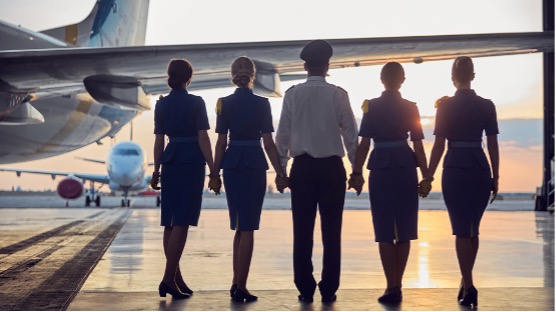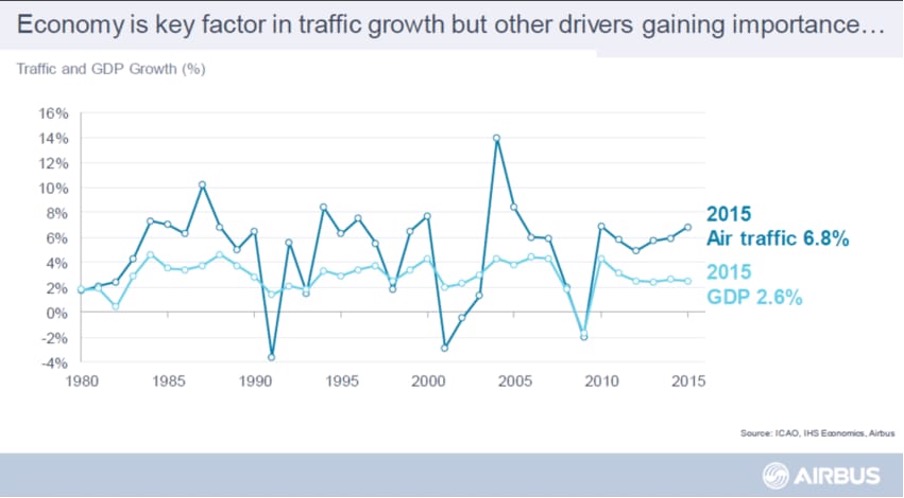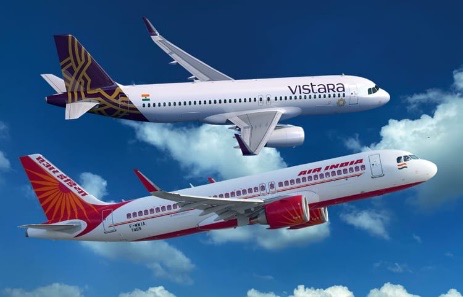With the growing needs of the people, there has been an increase in the number of individuals inclined toward air travel. PM Modi says India is the third-largest and fastest-growing airline market in the world. However, it is evident that the Indian Aviation industry is facing turbulence.

Engine Failure: Case Analysis of Go Air
Go First, formerly known as Go Air, filed for bankruptcy, despite launching its IPO a year prior. Initially, Go Air had been engaged in activities aimed at expanding its organization by increasing operations and acquiring more aircraft. The organization was optimizing its operational costs and had a good market share. However, the story isn’t limited to this company alone. It has been observed that around 13 airline companies have shut down in the last 20 years, with Jet Airways, Kingfisher, and many others on the list.
The question that arises is: what is wrong with the industry? To understand this, let us delve into the mechanism of the aircraft industry. To start a company, airline companies need to purchase or lease aircraft. There are two prominent companies in the industry for this purpose: Boeing and Airbus. Additionally, companies are supposed to purchase engines for their aircraft from companies such as Pratt and Whitney, CFM, and Rolls Royce. In the case of Go First, the company was owned by the Wadia family and was started by Jehangir Wadia, a former Director, in 2005. Several engine failures were witnessed, and the company blamed Pratt and Whitney for these failures. Due to multiple engine failures, the company had to ground 10% of its aircraft in 2018. This number significantly rose to 30% in 2021 and reached 50% in May 2023.
Despite using only 50% of the aircraft, the prices and charges for the other 50% were still paid. Indigo faced similar issues with Pratt and Whitney. In 2016, Indigo sensed issues with the engines and decided to change the supplier to CFM. In 2019, they signed a $20 billion deal with CFM International and sought compensation from Pratt and Whitney. On the other hand, Go First claimed that they were swayed by Pratt and Whitney’s presentations, which promised fuel savings, and trusted the company. However, Go First couldn’t even request spare engines. According to Morning context, last year, Go First had payment issues with Pratt and Whitney, which led to the company giving spare engines to Indigo. Go First later denied this statement and claimed that it made payments on time.
Engines were not the only issue; rather, it was a management issue faced by the company. It was found that the company faced internal clashes over who would run the management. In 2021, Go First’s head, Jai Wadia, resigned as the airline’s MD.
Last year, the Chief Financial Officer, Airport Services Head, and several senior executives from the revenue management and network planning departments also resigned. By September 2022, half of the revenue management team had left their jobs. Pilots and cabin crew even took other job offers due to no salary hikes. Eventually, this led to customer complaints, eroding trust in the company and resulting in significant losses. The failure of the company can be summarized into three major reasons: engine failures, poor management, and internal conflicts.
Customer Segment: Deccan Airline
In 2003, Deccan Airline launched its services under Captain G.R Gopinath, who aimed to make air travel affordable to increase customer reach. The airline met with an accident on its first journey, though no passengers were harmed. This incident, however, damaged the customer base, with passengers claiming that affordability was not worth compromising safety. However, after one month, the airline resumed operations with better precautions and was able to capture the market in a short period. The airline significantly reduced prices compared to existing airlines and operated on a first-come, first-serve basis. Despite its huge market share and operating 380 flights across 67 airports, the company started incurring losses due to high operational costs, which couldn’t be offset by price-sensitive customers, leading to its exit from the market.
Kingfisher Failure
Another airline company, Kingfisher, entered the market in 2005 and experienced rapid growth in a short period. Kingfisher targeted a premium audience, provided world-class services, and became popular among customers. The airline started operations in 2008 and was rated 5 stars by Skytrax, one among 7 airlines to receive such a rating, owing to its luxurious services. The company received positive feedback from customers, and the owner even sponsored a team in the IPL. However, in the same year, around September, the company announced to the BSE that it was running losses. Around February 2012, the Airports Authority of India sent a legal notice demanding the outstanding payment of $32 million and threatened legal action for non-payment of taxes.
In 2007, Kingfisher acquired Air Deccan and rebranded it as Kingfisher Red, aiming to provide affordable services while maintaining its premium brand. However, this move backfired as customers shifted from Kingfisher to Kingfisher Red. Additionally, the company faced challenges during the recession, as fuel prices rose drastically. It was found that for 5 years, the airline operated without a CEO. The failure of the company can be attributed to poor management, governance, and strategy.

Role of Government
Operational costs and customer segments are significant factors. Indigo was found to bear a loss of Rs. 29 per passenger. The problem arises because customers are willing to pay cheaper prices, while operational costs are influenced by various factors, with oil being a major one. ATF (Aviation Turbine Fuel) is known to be the most expensive fuel globally. ATF is outside the range of GST, making it subject to state-imposed taxes independently. The central government imposes excise duty on ATF, and states add Value Added Tax, leading to nonuniformity in costs from airport to airport. According to NITI Aayog, ATF costs 60% more in India compared to Southeast Asia and Middle Eastern countries. GST could remove these differences and lower operational costs, and the industry has been requesting the government for this change. Additionally, since oil is imported, price fluctuations occur due to geopolitical reasons. Another significant issue faced by Indian airline industries is the fluctuation in the value of the rupee compared to the dollar. Despite customers paying in rupees, companies make lease payments in dollars, leading to revenue challenges.

Conclusion
Poor management, governance, customer segmentation, and inability to maintain operational costs were the witnessed issues. Nevertheless, the Aviation Industry is booming and has become the third-largest domestic aviation market globally, contributing 5% to the GDP and employing 40 lakh people. In 2010, there were 8 crore passengers, which doubled in 7 years, with an estimated 52 crore passengers by 2037. As the population’s income rises, the industry will continue to grow. Although the percentage of the middle class remains low, the high population serves the industry’s purpose. The government has been promoting the aviation industry continuously.
In 2016, the government launched the Aviation Policy, amending past policies, including changing the 5/20 eligibility for airlines. In addition to this, the government launched another policy Udaan connecting small towns to big cities by subsidizing some routes at affordable routes. The question now arises why not government bailout the industry? the answer to this is the lack of trust in the government in the Airline Industry. people claim that the government should make certain changes in industry by changing its taxation policies and creating another policy.
Written by – Riya Kumari Shah
Edited by – Khalid Khursheed
